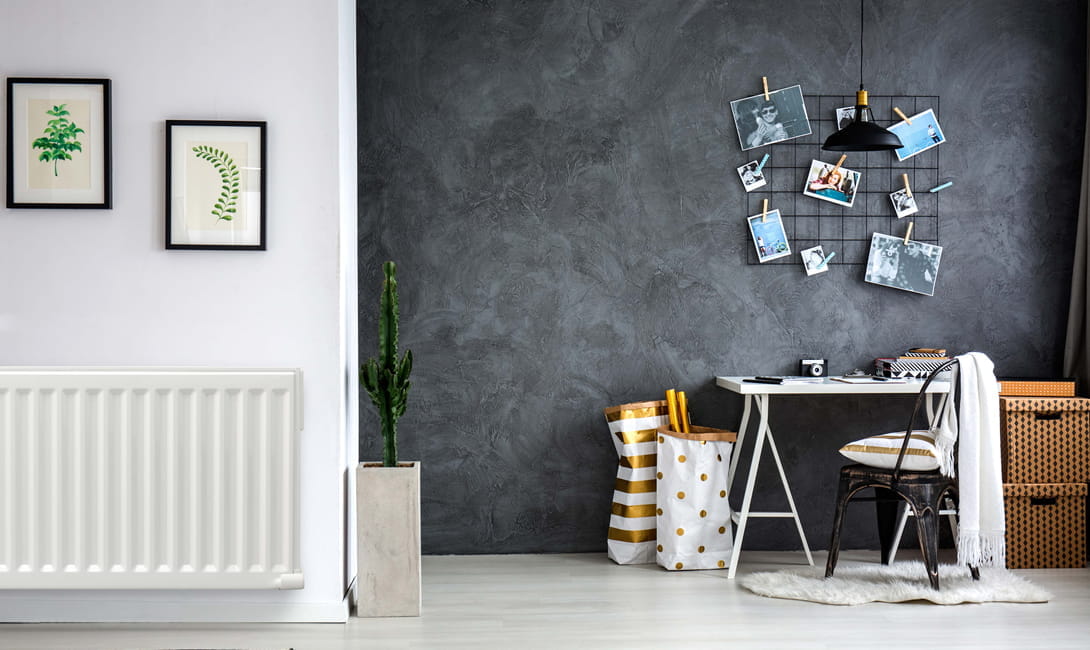- Electrical heating
- Radiators
- Renovation
Replacing old electric radiators to improve the indoor climate
The saying goes ‘you don’t fix something if it isn’t broken’ and this often also applies to electric radiators. We tend to wait until a radiator is no longer working to replace it with a new one. However, there are very good reasons to replace old electric radiators with modern ones and those have everything to do with energy efficiency and an optimal indoor climate.
Modern radiator technology
In the past decades radiator technology has come a long way and we are now reaping the benefits. This is true for hydronic radiators, but certainly also for old electric radiators. Because control technology, for example, wasn’t as advanced in the late 20th century, the electric radiators that were installed back then tend to be less efficient in their operation. This not only creates unnecessarily high energy bills but is also at odds with our goals for a more sustainable future.Old electric radiators vs. oil filled radiators
Modern electric radiators are better adapted to the current standards. Most of them are filled with biodegradable vegetable oil and generate more radiant heat than electric convectors. This means they warm up the people and objects in the room more quickly as opposed to the convection heat that slowly warms up the air in the room. It’s the combination of radiant and convection heat that’s perfect for creating a comfortable indoor climate. Additionally, due to the low hysteresis of modern electronic controls, the room temperature can be controlled much more precisely, and the heat is released more steadily, which contributes to a sense of greater comfort.Moreover, the surface temperature of modern electric radiators can be reduced to accommodate users prioritising safety and air quality. Surface temperatures above 70°C generally cause the air to be more quickly perceived as dry, since the dust in the air flowing through an open electric heater burns above 70°C. The surface temperature of our Yali Plus radiators, for example, can be lowered to 75° or even 60°C. It should be noted however, that if you’re considering to permanently use the radiator at 60°C or 75°C maximum, a correction factor needs to be applied for the heat output.
Indoor air quality
The perception of dry air is partly due to the smell of the burning dust, but actually mainly caused by a change in the ionisation balance of the air when it comes into contact with hot metal surfaces. When air flows along hot metal surfaces, the balance becomes more positive, i.e. the number of positive ions increases. Both these phenomena worsen the indoor air quality. By installing modern closed electric radiators you can easily solve these issues.“On top of that, replacing your old electric radiators with oil-filled radiators also elevates the relative humidity (i.e. the density of water vapor in a room relative to the temperature in that same room) with an average of 5%. An indoor climate improvement that’s due to reduced dust burning and a better ionisation balance”, says Mikko Iivonen, senior R&D adviser at Purmo Group.
Energy savings
In addition to a more comfortable indoor climate, replacing your old electric radiators with new ones also provides considerable energy savings. This is due to the better thermostat and enhanced controls that allow for a more even and accurately controlled room temperature as well as practical features such as a night setback or away mode. An old electric radiator with a bimetallic thermostat can have a hysteresis, or temperature difference, of up to 6 degrees. A modern electronic thermostat keeps the temperature constant to within 0.2 degrees. This alone can provide savings of up to 20%1.Old electric radiators in Sweden
The replacement of old electric radiators is an issue that’s especially prominent in Nordic countries such as Sweden. Niclas Schubert, VP of Sales for the Nordics at Purmo Group, explains: “Sweden is a big country with lots of single-family homes and buildings in remote locations that were equipped with electrical heaters in the seventies and eighties. These now consume too much energy and are very inefficient compared to the new electric radiators. When the old ones break down, in Sweden they are often replaced by 400 V oil-filled radiators because these fit directly on the old installation. Popular choices are the Yali Digital Plus panel radiator that can be controlled remotely and the Kaba2 radiator.”Electric heating as a complement
If it’s not to replace old electric radiators, modern electric radiators are often installed as a complement to the current HVAC system. “In small huts or summer cottages, for example, an air-to-air heat pump is often combined with an electric oil-filled radiator. Or when the hydronic heating system doesn’t work properly, an electric radiator is installed to ensure a constant room temperature”, says Niclas Schubert. “Also in cases where there’s a condensing problem with underfloor heating for example, we see that people invest in electric heating to improve the indoor climate.”
Discover our complete range of electric radiators
Sources:
1. https://electricalindustry.ca/latest-articles/5274-thermostats-the-key-to-energy-efficiency/

